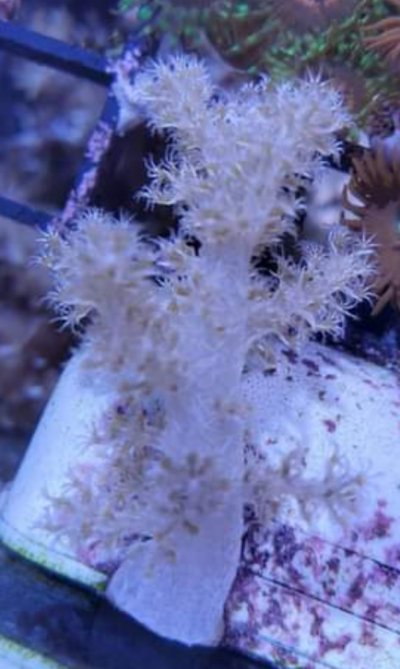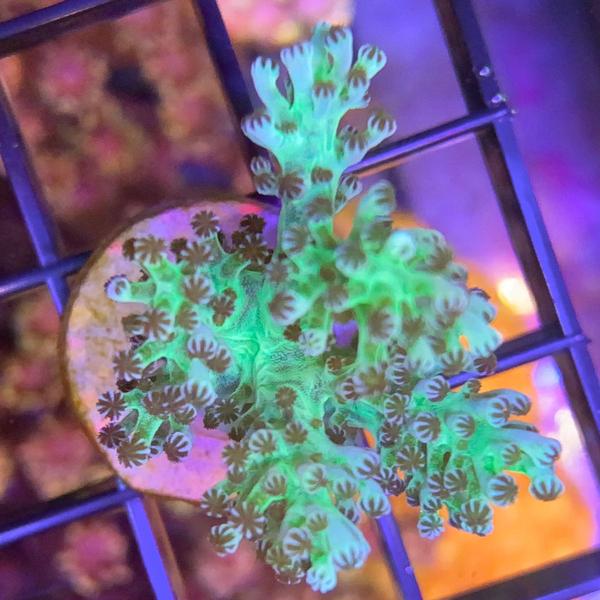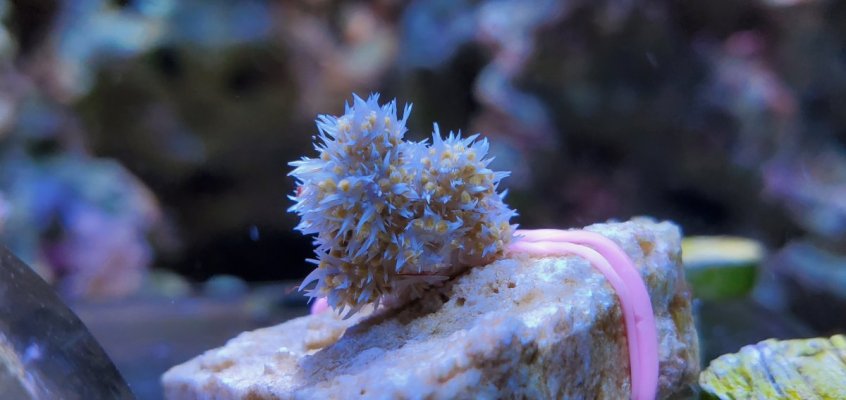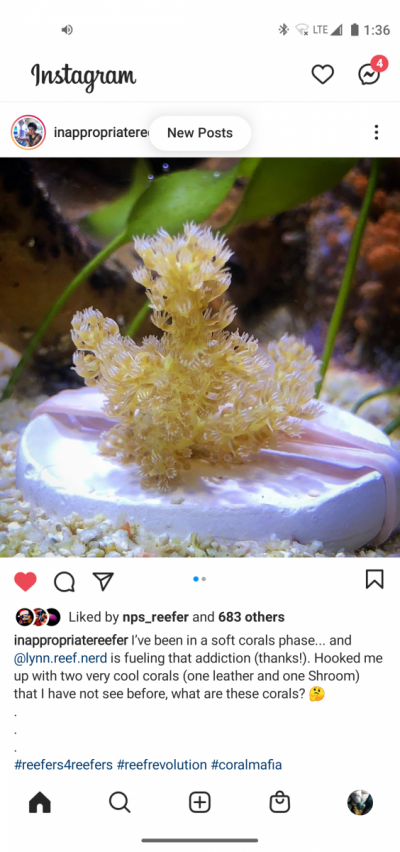- Joined
- Aug 18, 2019
- Messages
- 1,426
- Reaction score
- 1,728
Stereonephthya can also be photosynthetic. I’ve only come across a few samples that weren’t. In fact a lot of stereo is found in water so shallow when the tide goes out they are exposed to air. I will tell you this. The classification of nephtheidae corals is constantly moving because corals that were once divided into two separate species have been found using DNA to be the same or same enough. And corals originally thought to be the same are not. A lot of books and papers that are 10years or older are out of date and all we can do is wait to see what happens but things like this are slow. I’ve come across a few species (or what appears to be) of stereonephthya that has such tiny polyps and so many it’s difficult to tell if they are stereo. I am by far an expert. What I know and have seen could fit into a thimble and still have infinite space. I’m sure there are more than a few times I’ve gotten things wrong when trying to ID. So for me and my novice schooling, and since this is only a hobby to me, I take the main characteristics (now remember these can cross over so it’s not precise) and use that as a base line.Found your post quite interesting. It looks like the Stereo that I got from Divers Den is really a Litophyton. I looked them up in my Borneman coral book and read that they are photosynthetic. That may explain why mine did better when it was moved under lights from a dark area. What have you found?
Stereo: thin skin,(often translucent) 90 degree elbows in polyp, extending supporting bundles, visible sclerites, “crunchy” feeling when retracted, looks like a skinned coral when deflated. Often in two colors although the color may be isolated to the polyps or just the sclerites. Polyps do not retract into the branches. If you want a comparison look at how smooth sinulara get when retracted. Stereo will never do that.
Litophyton: less transparent, softer (especially when extended) but can’t be stiff when contracted, no extending supporting bundles, can be taller when fully extended, usually more “tree” shaped. Taller slinder varieties are easy to mix up with lemnalia until you touch it. But litophyton has sclerites. They are usually more visible in the branches and tiny speckles along the trunk. The branches can fool you big time. Especially with some specimens because the sclerites are so bold. Another thing I’ve noticed with lito is almost all colors even drastic ones like a green one I have, turn some shade of pink when fully extended.
Lemnalia: resembles litophyton from a distance is slimy and drips goo when irritated. I think some are worse than others. I suspect I might have a sample in my tank I thought was lito but it’s not sliming everything so I’ve left it. Almost no sclerites at all except maybe faint ones in the branches but they are usually very tiny and not really lines. Body and branches are soft.
Nepthea: this coral species technically no longer exists and is now merged with litophyton however it seems to have some crossover with stereonephthya. So use nephthya eventhough that’s technically incorrect but it helps (for me) because these traits are so distinctive: it’s very classically “tree” shaped. Smooth trunk branches running off a central stalk reaching upwards not draping. It has denser flesh and less filled with water. Which are all Lito characteristics of lito. However the seem to be a lot stiffer when contract and crunchy and have extending supporting bundles but can be *very tiny* Usually one color but they do come in two or very drastic shades of color between polyps and stalk. Sclerites can be very bold but at the same time “lost” against opaque flesh. Easier to see them with light shining through their bodies.
I can see why Nephthea litophyton gets mistaken for stereo by importers whole sellers and even sellers like LA. But they irritate me when they label something obviously not stereonephthya as stereonephthya or lemnalia as litophyton.
I hit the post button too soon: The family Nephtheidae incorporates everything from Dendronephthya to Kenya trees (capnella). I notice a lot of sellers, labeling all tree corals as "Nephthya or Nephthea species". This is wrong. Nephthea is a specific species and Dendronephthya, capnella, and Lito are *not* all nephthea. And labeling it as nephthea is even more confusing. I think they mean they are the same family (I hope) and all Nephtheidae, which is correct. But nephtheidae encompasses all tree type corals photosynthetic and non photosynthetic.
To correctly label the corals it should be Family Nephtheidae Species Dendronephthya, Family Nephtheidae Species Stereonephthya and so on.
I think they just throw out that blanket term so they aren't claiming any it to be a particular species so when they send the wrong one, oh well.
Last edited:





















